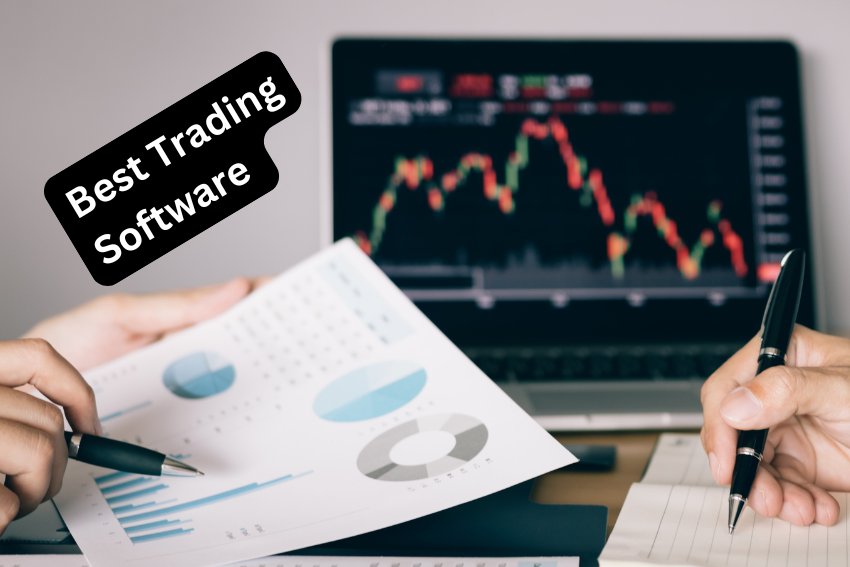Cash flow is the lifeblood of any business, and small businesses are no exception. So what exactly is cash flow, and why is it so crucial to your company?
Cash flow isn’t just the money you receive from customers or the money you put into your business—it’s also the money you need to get your products out to the market and make sure they arrive when they’re supposed to. It’s also the money you need to pay your bills when they come due and to invest in new products, services, and employees.
The Importance of Having Cash in Your Bank Account
You need to understand something fundamental about a small business’s cash flow. This factor, unfortunately, can make or break a business. Cash flow is not some made-up figure plucked out of thin air.
Cash flow refers to money entering your company and leaving your company; it’s that simple. At any given time, all of your expenses will be tallied in one column, while all of your revenue sources will be added up in another.
If you have more money coming in than going out—bam! You have cash flow! On top of that, if you also have extra money left over after subtracting expenses from income, then you are definitely looking at a good situation…and perhaps even a profitable one.
The Importance of Knowing Your Cash Flow:
So why do you care how much cash comes into and goes out of your business? Because cash is what makes a small business grow. This includes buying new equipment, making upgrades, paying employees and yourself, expanding services/products, marketing new items/services/branding etc… We could go on forever, but we would be here all day talking about ways that businesses use their hard-earned dollars.
The list goes on forever because there are just so many variables when running an independent operation. So ask yourself again, why do you need to know your company’s cash flow figures?
How Knowing The Right Time To Pay Expenses Affects Your Cash Flow
When you’re running a small business, expenses are going to crop up—some expected, some not. However, paying these expenses at different times can help (or hurt) your business’s cash flow significantly. Let’s take a look at some of these variables so you can best time your payments in order to keep an even keel with your finances.
Understanding how payment timing affects cash flow means you will be able to properly budget as well as know when it is essential to pay vendors on time.
Understanding that there may be penalties if you miss payment deadlines is an important aspect when deciding whether or not it would be good to pay expenses early or wait until they are due.
In addition, understanding how large purchases affect your business’s finances makes calculating profits easier and allows you to allocate funds more effectively based on current needs rather than planning what expense will come next several months into the future.
Tips On Getting and Staying In The Green Every Month
You need to hit certain benchmarks before you consider yourself a legitimate business. One of those is reaching cash flow positive or having enough money coming in from customers to cover your operating expenses every month. Like figuring out how much money you’ll need to launch your business, creating a profit plan is best done when your business is still in its infancy.
By determining what income (or loss) will look like on paper over a series of months, you’ll be able to identify how close or far away you are from hitting that profitable mark—and how much more work it might take to get there. Before long, it’ll feel like second nature!
A few important cash flow elements include projections for sales revenue, growth in expenses and your burn rate. A burn rate is what you spend to run your business every month—essentially, how much money you need to cover overhead expenses like utilities or payroll.
The two are inextricably linked; a higher burn rate means a lower cash flow per month because there’s less money left over once all your bills are paid. If your monthly burn rate is much higher than your monthly cash flow, it might not be long before you’re running into trouble. If that’s the case, it’s time to take action: perhaps by laying off some staff or restructuring overhead costs until they match better with income.
Steps small businesses should take to get their cash flow right
The following steps will help you get your cash flow under control so that you’re able to meet financial obligations without any hitches. To start:
Make sure you have a complete picture of where your business stands financially.
Look at your bank accounts, invoices, and outstanding invoices (such as rent). If there are unpaid invoices or unexpected expenses in need of funding, it may be time to go through some expense cutting exercises. In order to monitor your monthly expenses, having an expense report template can be a great tool for your business.
Once you know how much money is coming in and how much money is going out, take note of whether there’s a recurring monthly difference between income and expenses that could be used to build up savings each month.
Here’s what you can do:
Put together a cash flow statement
This will give you a snapshot of your business’s financial status, showing where you stand at any point in time. Based on your current expenses and revenue, do you see a recurring monthly difference between income and expenses that could be used to build up savings each month? If so, put it in your savings account; you can always use it when unexpected expenses pop up or when there’s an upcoming big purchase such as new equipment that requires financing.
Forecast your expenses
Now, use your cash flow statement to determine where you stand financially in future months by forecasting how much you’ll make on sales each month (and seasonally). Then, forecast how much money you’ll need for bills (utilities, salary, etc.), taxes (state and federal), debt payments (if applicable), rent/mortgage payments, etc. After that, compare those amounts to see if there’s a recurring monthly difference between income and expenses that could be used to build up savings each month. If so, put it in your savings account; it’s not advisable to spend money on unnecessary things when cash flow is tight.
Plan ahead
Based on your cash flow forecast, how long can you continue operating without an influx of new money from sales? Your goal is to have enough cash on hand so that you won’t be forced to stop or slow down production or services until that money runs out. When does it run out? If it’s in a couple of months, brainstorm ways to increase sales; if it’s within a year, plan ways to cut back on expenses so that there’s more wiggle room in your budget. Either way, ensure that there are enough funds available until things start picking up again—and then plan to make good use of those savings once things get busy again!
How to understand, calculate, and manage cash flow:
In order to manage cash flow, you have to first understand what it is—and why it’s so important. When businesses make money, they can either use that money to reinvest in their company or distribute it to shareholders or owners.
For example, if a company brings in $5 million over a month, that company could pay its operating expenses (at $3 million) and then invest in buying new equipment (the remaining $2 million). That would be an example of positive cash flow. But let’s say your business makes $5 million over a month but has operating expenses of $4 million—and you don’t spend any on capital expenditures. That would be an example of negative cash flow.
Negative cash flow means that a company isn’t generating enough revenue to cover its costs; it will eventually burn through all of its resources and potentially even go out of business. Cash flow doesn’t just indicate how profitable a business is; it also shows investors how long companies can survive without additional funding from outside sources, like banks or venture capitalists. Therefore, knowing exactly where all incoming revenue goes each month ensures small businesses stay healthy even when things get tight financially.
Cash flow statement versus income statements and balance sheets: Some people mistakenly think that cash flow is synonymous with profit or loss. But while a company’s cash-flow statement is related to its income statement, they aren’t exactly identical.
A cash-flow statement shows how money flowed in and out of business over a specific period of time, whereas an income statement shows how much revenue—and therefore, how much profit—the business generated over that same period.
You can use either financial document to help determine whether your business has enough capital to sustain its operations going forward or whether it’s in danger of being unable to pay its expenses or even going out of business altogether.
The bottom line
The cash-flow statement is a one-page snapshot of your company’s liquidity. It shows how much cash you’re taking in—and where it’s coming from—as well as where you spend it. It tells investors, lenders, customers, suppliers, partners—pretty much anyone who has dealings with your business—whether you can handle upcoming bills or repay past debts.
While many entrepreneurs rely on their financial team to crunch these numbers, a clear understanding of what goes into them will help keep your business financially healthy. Understanding cash flow helps identify weak spots that need improvement or corrections to existing strategies before they lead to problems down the road.






